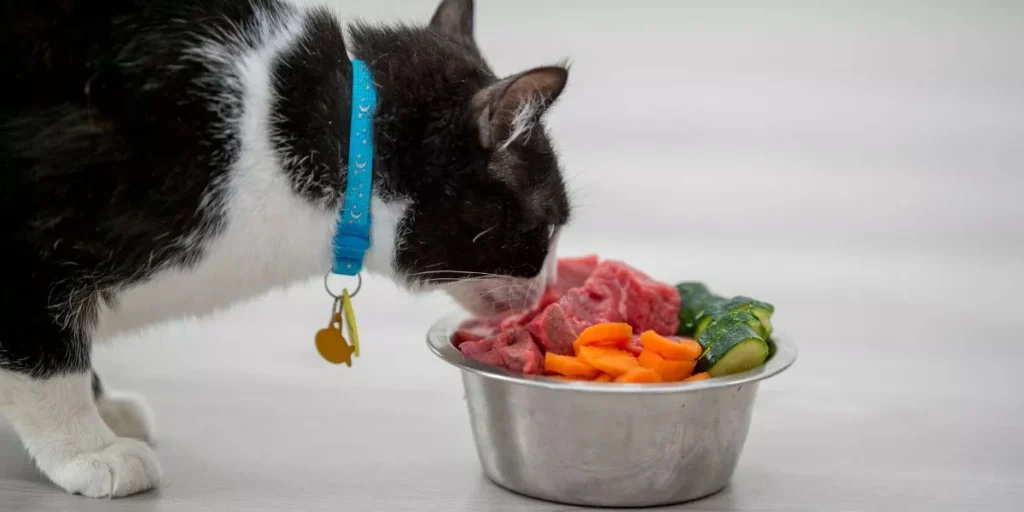How Do You Transition Your Cat to a New Food Safely?

When transitioning your cat to a new food, it’s crucial to consider various factors to ensure a smooth adjustment. From assessing the current diet to monitoring your cat’s response, each step plays a vital role in maintaining your cat’s health. However, there’s one aspect often overlooked that can significantly impact the transition process – your cat’s behavior. Understanding how your cat behaves during this change can provide valuable insights into their preferences and comfort level, ultimately leading to a successful switch.
Assess Your Cat’s Current Diet
Before making any changes, evaluate what your cat is currently eating. Look at the ingredients in their food and consider factors like protein content, carbohydrate levels, and overall nutritional balance. Take note of any specific dietary requirements your cat may have, such as allergies or sensitivities to certain ingredients. It’s crucial to understand your cat’s current diet to make informed decisions about transitioning them to a new food safely.
Check your cat’s eating habits and preferences. Does your cat enjoy wet food, dry kibble, or a combination of both? Observing how your cat interacts with their food can give you valuable insights into their preferences. Additionally, monitor their appetite and weight to ensure they’re maintaining a healthy balance.
Consult with your veterinarian if you have any concerns about your cat’s current diet. They can provide guidance on potential dietary changes based on your cat’s age, weight, and health status. By assessing your cat’s current diet thoroughly, you can lay the foundation for a successful transition to new food that meets their nutritional needs.
Choose the New Food Wisely
Assessing your cat’s current diet provides valuable insights that can guide you in selecting the most suitable new food for them. Consider factors such as your cat’s age, weight, activity level, and any health issues they may have. For example, if your cat is a senior or overweight, you may want to choose a food that’s lower in calories and specifically formulated for their needs.
On the other hand, if your cat is a kitten or very active, a high-protein diet may be more appropriate.
When choosing a new food for your cat, opt for high-quality options that list meat as the primary ingredient. Avoid foods that contain fillers, artificial colors, and preservatives. It’s also essential to select a food that’s nutritionally balanced and meets the standards set by organizations like the Association of American Feed Control Officials (AAFCO).
If your cat has specific dietary requirements or allergies, consult with your veterinarian to find a suitable food that meets their needs. By choosing the new food wisely, you can help ensure a smooth transition for your feline friend.
Gradually Introduce the New Food
To transition your cat to new food safely, start gradually introducing the new food into their current diet. Abrupt changes can upset your cat’s stomach, leading to digestive issues.
Begin by mixing a small amount of the new food with their current food. Over the course of about a week, gradually increase the proportion of the new food while decreasing the old food. This slow transition allows your cat’s digestive system to adjust to the new food without causing discomfort.
Monitor Your Cat’s Response
Keep an eye on how your cat reacts to the new food as you gradually transition them to it. Watch for any signs of digestive upset, such as vomiting, diarrhea, or decreased appetite. These could indicate that your cat is having trouble adjusting to the new food. Additionally, observe your cat’s overall behavior and energy levels. If you notice any unusual changes, it might be a sign that the new food isn’t agreeing with them.
It’s important to monitor your cat’s response throughout the transition period, as every cat is different and may react in their unique way. Keep track of any changes you notice and how long they persist. If your cat experiences ongoing issues or seems unwell, it’s essential to take action promptly.
Seek Veterinary Advice if Needed
If you notice persistent issues or concerning symptoms in your cat during the food transition process, seeking veterinary advice is crucial. Your cat’s health is paramount, and if you observe any worrisome signs such as prolonged vomiting, diarrhea, refusal to eat, lethargy, or any other unusual behavior, contacting your vet is the best course of action.
Veterinarians are trained to assess your cat’s condition and provide tailored recommendations to address any health concerns that may arise during the food transition period. They can offer guidance on whether to continue with the new food, make adjustments to the transition process, or suggest alternative dietary options based on your cat’s specific needs.
Trending Products










